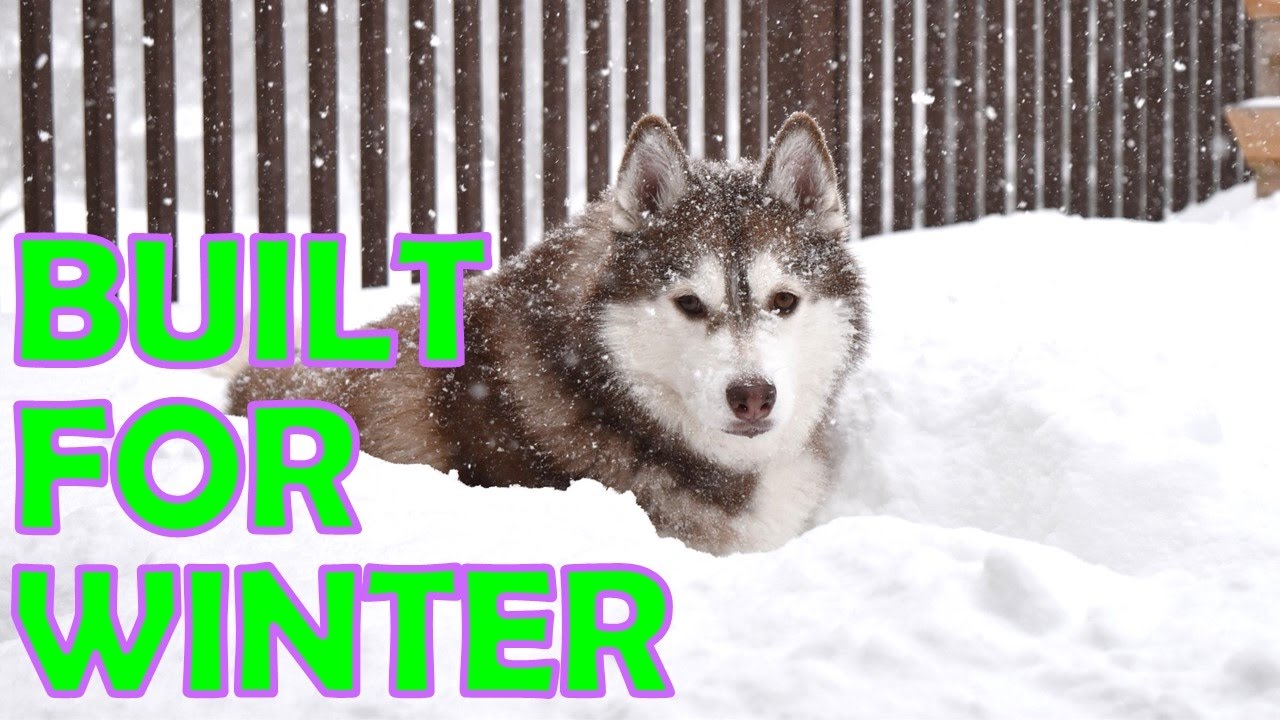Imagine the wild, untamed beauty of a husky gracefully maneuvering through a winter wonderland. With their thick coats and resilient nature, these fascinating creatures have long been known for their ability to thrive in freezing temperatures. But just how cold can a husky truly handle? Join us as we explore the incredible adaptability of these remarkable canines and delve into the secrets behind their frost-resistant abilities. From their unique physiological characteristics to their ancient survival instincts, prepare to be amazed by the extraordinary cold tolerance of the husky breed.
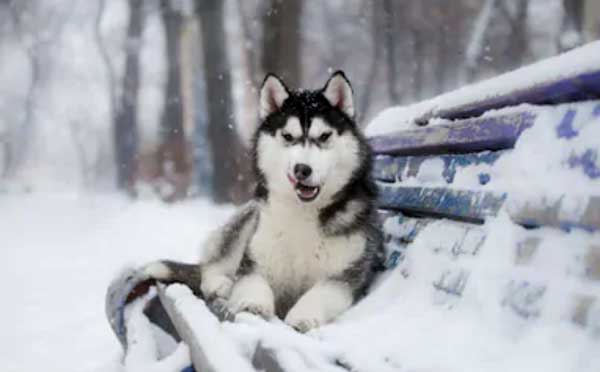
This image is property of huskyowner.com.
Temperature Tolerance of Huskies
Huskies are a breed of dog that is renowned for their ability to tolerate cold temperatures. This is due to their natural adaptations, which make them well-suited to thrive in cold climates. However, it is important to understand the ideal temperature range for Huskies, as well as the factors that can affect their tolerance of cold weather.
Natural Adaptations of Huskies
Huskies have several natural adaptations that allow them to withstand cold temperatures. One of the most notable adaptations is their double coat, which consists of a dense undercoat and a longer outer coat. This double coat helps to insulate them, keeping them warm in freezing temperatures. The undercoat is particularly effective at trapping and retaining body heat, while the outer coat helps to repel moisture and protect against wind chill.
In addition to their double coat, Huskies also have a unique foot structure that aids in cold tolerance. Their feet are covered in a thick layer of fur and have a webbed design, allowing them to navigate snowy terrain with ease. The fur acts as insulation, while the webbing helps to distribute their weight over a larger surface area and prevents them from sinking into the snow.
Ideal Temperature Range for Huskies
While Huskies are well-equipped to handle cold weather, there is still an optimal temperature range in which they are most comfortable. Generally, Huskies can tolerate temperatures as low as -60°F (-51°C). However, their ideal temperature range is between 32°F (0°C) and -20°F (-29°C). Within this range, Huskies are able to maintain their body temperature without excessive effort or risk of cold-related health issues.
It is important to note that individual Huskies may have varying tolerances to cold temperatures. Factors such as age, overall health, and conditioning levels can influence their comfort in different temperature ranges. Additionally, factors such as humidity, wind chill, and duration of exposure should also be taken into consideration when determining the appropriate temperature range for outdoor activities.
Factors Affecting Cold Tolerance
While Huskies have excellent cold tolerance, there are several factors that can affect their ability to withstand extreme cold. One important factor is acclimatization. Huskies raised in colder climates or exposed to cold temperatures from a young age tend to have better cold tolerance than those raised in warmer regions. This is because their bodies produce adaptations that allow them to better regulate their body temperature in response to cold stimuli.
Another factor that can impact a Husky’s cold tolerance is their overall health and conditioning. Dogs that are in poor health or have underlying medical conditions may have a diminished ability to regulate their body temperature in extreme cold. It is important to monitor the health of your Husky and consult with a veterinarian if you have any concerns about their ability to tolerate cold weather.
Lastly, the duration of exposure to cold temperatures can affect a Husky’s tolerance. While they may be able to handle brief periods of extreme cold, prolonged exposure can increase the risk of cold-related health issues such as frostbite and hypothermia. It is essential to limit outdoor time in extreme cold and provide adequate shelter and protection for your Husky to ensure their well-being.
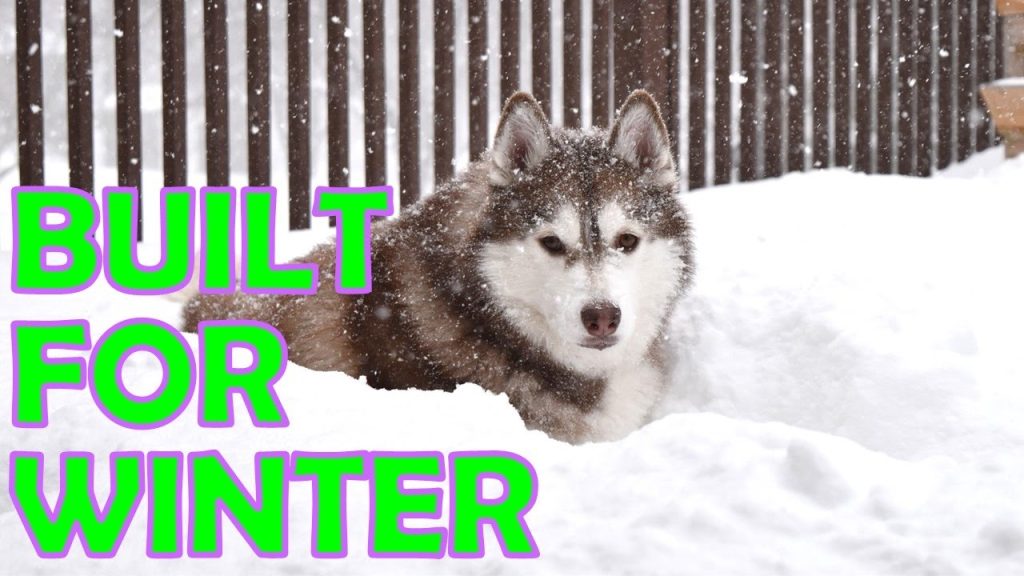
This image is property of i.ytimg.com.
Preventing Frostbite and Hypothermia
When it comes to cold-related health issues, such as frostbite and hypothermia, prevention is key. Being aware of the signs and symptoms of these conditions, as well as taking proactive measures to protect your Husky, can help ensure their safety and well-being in cold weather.
Signs of Cold-Related Health Issues
Frostbite is a condition that occurs when tissue freezes due to prolonged exposure to extreme cold. The most commonly affected areas in Huskies are the ears, tail, paws, and nose. Signs of frostbite include pale or gray skin, coldness to the touch, swelling, and the formation of blisters or ulcers. If you suspect your Husky may have frostbite, it is important to seek veterinary care immediately.
Hypothermia, on the other hand, is a condition characterized by a dangerously low body temperature. Early signs of hypothermia in Huskies include shivering, lethargy, and a decrease in coordination. As the condition progresses, your Husky may become unresponsive, have a weak pulse, and exhibit shallow breathing. Hypothermia is a medical emergency, and immediate veterinary attention is necessary.
Protective Clothing for Huskies
While Huskies have a natural coat that provides insulation, certain circumstances may warrant the use of protective clothing to further shield them from the cold. For example, if you live in an area with extreme temperatures or plan to engage in prolonged outdoor activities in cold weather, investing in a well-fitting dog coat or sweater can help keep your Husky warm and prevent heat loss.
When selecting protective clothing for your Husky, it is important to ensure that it fits properly and does not restrict their movement. The material should be breathable to prevent overheating, yet sufficiently insulated to retain body heat. Additionally, make sure to regularly check for any signs of irritation or discomfort caused by the clothing and remove it if necessary.
Proper Shelter and Bedding for Huskies
Providing your Husky with a suitable shelter is essential during cold weather. While their thick coat offers some protection from the elements, having a warm shelter to retreat to can help prevent cold-related health issues. A proper shelter for a Husky should be insulated, well-ventilated, and raised off the ground to minimize heat loss.
Inside the shelter, providing adequate bedding is crucial. Opt for materials that offer insulation, such as straw or blankets, and ensure they are kept clean and dry. Replace bedding regularly to prevent the buildup of moisture, which can increase the risk of frostbite and hypothermia. Furthermore, consider using heated pet pads or blankets to provide additional warmth and comfort for your Husky.

This image is property of i.ytimg.com.
Outdoor Activities in Cold Weather
Huskies are known for their high energy levels and love for outdoor activities. However, special considerations should be taken into account when engaging in these activities during cold weather to ensure the well-being and safety of your Husky.
Exercise Considerations
Regular exercise is important for the physical and mental well-being of your Husky, even in cold weather. However, it is crucial to adjust the intensity and duration of exercise according to the temperature and individual tolerance of your Husky. Take frequent breaks to allow your Husky to rest and warm up, and pay attention to any signs of discomfort or distress.
Additionally, choose appropriate activities for cold weather, such as brisk walks or short runs, to prevent overexertion. Avoid activities that involve extended periods of exposure to cold, such as swimming in freezing water. Be mindful of the surface your Husky is walking or running on, as ice and road salt can be harmful to their paw pads.
Dog Booties and Paw Protection
During cold weather, it is important to protect your Husky’s paws from the harsh elements. Snow, ice, and road salt can cause irritation, cracks, and even frostbite. Using dog booties can help provide insulation and protect their paws from these potential hazards. Additionally, applying a paw protectant or petroleum jelly to their paw pads can help prevent drying and cracking.
When introducing your Husky to booties, it may take some time for them to get used to wearing them. Start by gradually increasing the duration of wearing the booties and provide positive reinforcement to associate them with a positive experience. Regularly check the booties for any signs of wear or tear and replace them as needed to ensure their effectiveness.
Limiting Outdoor Time in Extreme Cold
While Huskies are well-equipped to handle cold temperatures, there are limits to their tolerance. In extreme cold, it is essential to limit their outdoor time and prioritize their comfort and safety. Keep an eye on weather forecasts and avoid taking your Husky outside during severe weather conditions such as blizzards or freezing rain.
When it is necessary to take your Husky outside in extreme cold, ensure it is for short periods and provide them with breaks in a warm environment. Keep an eye out for signs of discomfort or distress, such as shivering or lifting their paws, and take immediate action to warm them up if necessary. Always prioritize your Husky’s well-being over any outdoor activities in extreme cold.
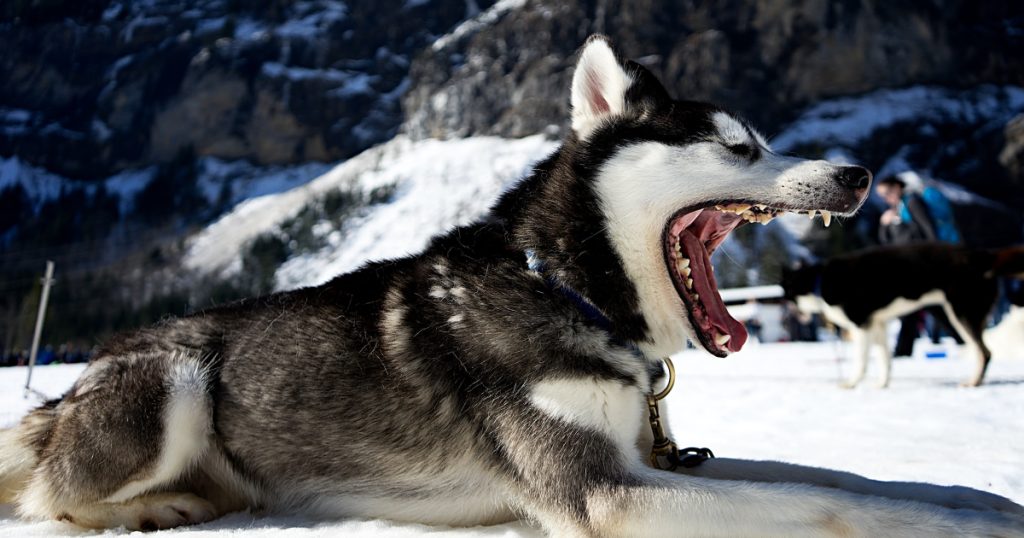
This image is property of www.petplate.com.
Special Considerations for Extreme Cold
While Huskies can handle cold temperatures exceptionally well, there are certain situations where additional precautions need to be taken. These situations include Husky puppies, senior Huskies, and Huskies with pre-existing health conditions.
Cold Weather Tips for Husky Puppies
Husky puppies have a higher vulnerability to extreme cold due to their smaller size and less developed immune systems. It is important to provide them with extra protection and warmth to prevent cold-related health issues. This can include using dog coats or sweaters specifically designed for puppies, providing a warm and insulated shelter, and monitoring their behavior closely for any signs of discomfort or distress.
Additionally, avoid taking Husky puppies outside in extreme cold for extended periods. Limit their exposure and prioritize their comfort and safety. Remember that their tolerance to cold temperatures is lower compared to adult Huskies, and they may tire more easily.
Cold Weather Tips for Senior Huskies
As Huskies age, their ability to regulate body temperature may decrease, making them more susceptible to the effects of extreme cold. Ensure that senior Huskies have access to a warm shelter and extra insulation, such as additional bedding or heated pet pads. Monitor them closely for any signs of discomfort or health issues, and consult with a veterinarian if needed.
It is also important to adjust their exercise routine according to their age and individual needs. Allow for more frequent breaks, and choose activities that are less physically demanding. Regular veterinary check-ups are essential for senior Huskies to monitor their overall health and address any age-related concerns.
Cold Weather Tips for Huskies with Health Conditions
Huskies with pre-existing health conditions may have a reduced tolerance to extreme cold and require extra care and attention. Medications or treatments that they may be receiving can also affect their ability to regulate body temperature. Consult with a veterinarian to understand any specific precautions that need to be taken and to ensure that your Husky’s condition is well-managed during cold weather.
Provide your Husky with additional protective measures, such as insulated clothing or booties, to prevent any exacerbation of their condition due to cold exposure. Regularly monitor their health and behavior, and seek veterinary care if there are any signs of discomfort or potential health issues.
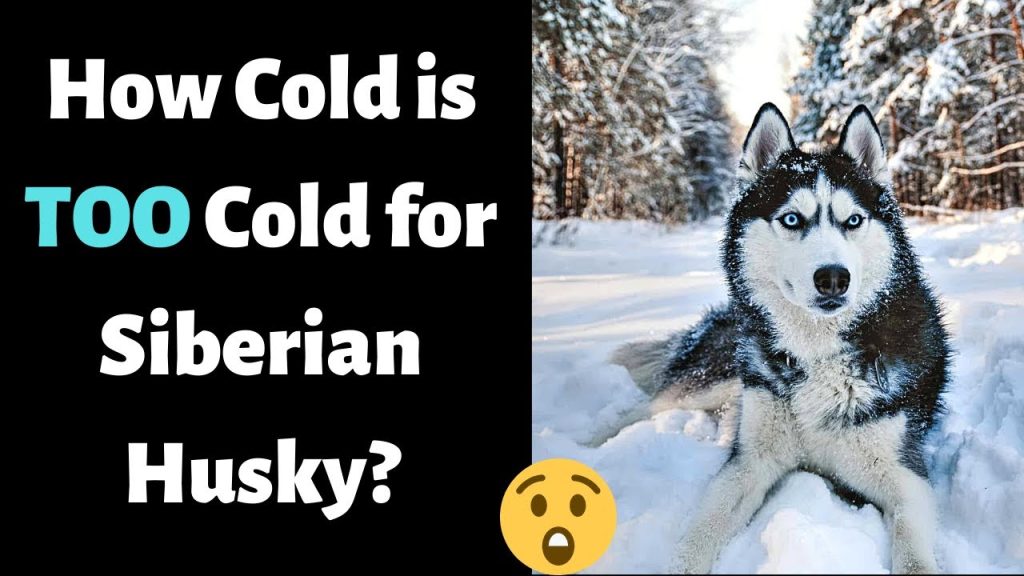
This image is property of i.ytimg.com.
Grooming and Nutrition in Cold Weather
Proper grooming and nutrition play important roles in maintaining your Husky’s health and well-being during cold weather. Making a few adjustments to their grooming routine and diet can help ensure they are adequately prepared for the colder months.
Proper Coat Maintenance
Huskies have a self-cleaning coat that does not require frequent bathing. However, regular brushing is important to prevent matting and to keep their coat clean and tangle-free. Brushing also helps to promote blood circulation to the skin, which can aid in maintaining their body temperature.
When brushing your Husky, use a brush specifically designed for their thick coat, such as a slicker brush or undercoat rake. Pay attention to the areas where their fur is thicker, such as the neck and hindquarters. This will help to remove loose hair and prevent the formation of mats, which can trap moisture and potentially lead to skin issues.
Adjusting Husky’s Diet
During cold weather, your Husky’s energy requirements may increase to maintain their body temperature. Consider adjusting their diet to provide additional calories and nutrients. Consult with a veterinarian to determine the most appropriate diet for your Husky based on their age, activity level, and overall health.
Feeding a high-quality dog food that is specifically formulated for active breeds can help ensure they receive the necessary nutrients to support their energy levels and immune system. Additionally, providing small, frequent meals throughout the day can help prevent digestive upset and maintain a steady supply of energy.
Hydration in Cold Weather
While it may be easy to overlook, proper hydration is just as important during cold weather as it is during hot weather. Ensure that your Husky has access to fresh water at all times, even when outdoors. Consider using heated water bowls or insulated water bottles to prevent freezing of the water in extremely cold temperatures.
Monitor your Husky’s water intake and make adjustments as necessary. Cold weather can sometimes lead to a decrease in thirst, so encourage them to drink by offering water during meal times or using wet food. Proper hydration is essential for maintaining their overall health and preventing issues such as dehydration and urinary tract problems.
By understanding the temperature tolerance of Huskies and taking appropriate measures to protect them from cold-related health issues, you can ensure that your furry friend stays happy and healthy during the colder months. Whether it’s providing adequate shelter, protective clothing, or modifications to their grooming and nutrition, a little extra care will go a long way in keeping your Husky comfortable in cold weather. Remember, their well-being is in your hands, so prioritize their safety and enjoyment when venturing outdoors during winter.
